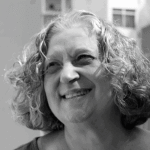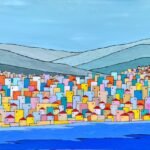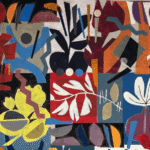An article by AV (945 Words, 5 Min. Read)
Ever Since Humans Started Etching on the Walls of Caves, there has been been depicts of human Figures, Faceless, and in Difference Shapes and Forms, where the situation rackher than the indidual was Emphasized and WAS Intended to DePict a Scene or to Paint a Pictture of An Event.
In Scandinavia, Stone Carvings Dating Back to About 2000 BC Were Discovered, and Amongst them Were Multiple Depetits of Such Faceless Human Forms. The Idea is there by no means origin or unique.

The renaissance
Fast Forward to the Renaissance Artists Completed Amongst Each Other Playing With Light and With Human Expression to Go In THE Deetals that can emphasize Human Emotions, Character, and the Mood of a Certain Siteation. Many Artists Except at Making Portraits a Commodity that was only worky or the rich and the world. The More Portraits Were Mounted on A Wall, The More The Reflection of Wealth of the Home Owner. Attente to detail was key, and many of the those portraits are no Housed in Museums Around the World for Admorers to Wonder at the Beautiful Depactions of Deep Emotions.
Modernism and Beyond
At the Turn of the 20th Center, The Move Away from Portraits was Mostly Driven by the Advent of Photography Which Mostly Replaced the Portrait by Photographs. It was then that artists realized that the mystery that Lied in Painments where the face was Mostly Hidden Added a Dimense to the Painting Which Was Previoously Unexplored.
In the 1800’s, German Painter Caspar David Friedrich PionEERED The Painting of Figures Looking at Sublime Landscapes, They Backs Toward the Viewer. His Famous Painting of a Couple Peering Out from a SHIP’s Bow Compets with the Painting of a Woman Gazing From Her Window in Being A among Detail of the Face in Master Artworks.

In 1901, Danish Artist Ida Hammers Mosive’s Paintings Had A Recurrent MySterious Woman Painted from the back. Partly Those Painments Gave the Observer A Sensation of Intessy when one was Peaking into the Privacy of the Character in the Painting. Ida’s PAINTINGS AR SONE OF of The Most Song after Paints of All Time.

Artists who adopted this Trend Include Famous Names Such As Gideon Rubin and Renee Magartte. Many Artists Later Omitted the Face Completely and Focuse Solely on Limbs. And in its endreme form of IDENTITITY MyS spent, some artists hid their owns or IDENTITIONS from the public, an expple of that is banksy who truce IDENTITITIONS Remains A Mystery to this Date.
Lebanese Artists and Faceless Painments
Many Lebanese Artists Experimented with Faceless Painments. Paul Guiragossian PionEred this art in depicting Faceels Figures, Mainly in Groups or Communities, where the Focus was more on the meang of the Moment, on the bonding and on family reunions RATHER For the Individual Themselves. Shafic Abboud in the 1960s Painted Faceless Humans and Expanded is Art In THEABSTRATIONON of the Human Figure. Elie Kanaan’s Abstract Portraits Rarely Depacted Any Facial Expression if any at all. Chawki Chamoun’s Figures Are Mostly Back Views of Miniature Silhouettes who are Admiring The Beautiful Mountains As they were for Something to take.

In More Recent Times, we havemen Multiple Exhibitions Whatseess Art Was the Main and Primary Focus. Magali Katra’s Faceleg Sillhouettes Are Magical and DePict a Sense of Fluidity and Motion Portraying An Expression, An Idea, A Stand, With Zero Input from the Face. Wissam Beydoun’s Faceels Figures Superimpose on Backwards as Profound as the Maps of Beirut Are Stunning in Bringing the Human Emoto Oonto The Geographical Sense of a CITY. Mansour El Habre’s Figurines AR Sometimes Simple Ink Lines that Talk to the Observer Through A Post or A Pose, Ratter Tha Through An Expression of An Eye, Or A Mount or A face. Other Artists Who Experimented with Faceless Figures Include Yasmina Hilal, Rawad Ghattas (Who Even Had a Solo Exhibition Called “Faceless”, and, Recently, Haibat Balaa Bawab Whose Solemit Faceless Figures Grated A Big Power of Her Most Recent Solo Exh force in Beirut.


We was Surprised to See Yet Another Exh force There is the Nothing Wrong with that, Except that this One CORT OF PortRaying Anything New. The Overwhelding Sensation of the Observer is that is a collective of different artists who have already home this theme and somehow them are now color collecated in one confined space. Perhaps the Medium used, watercolor, is relatively different, Howver, there has been a lot of watercolor masters who have exhibited figurative art that that borderlines Portrait, Abstract, and mysterious “Foggy” Faces All at the Same Time. We are All Too Familiar with the Artist Being Secure in their Own Comfort Zone. Where Ured to get out of it and Explore “Something Difference” them CALCULATED LEAPS Should Be Applauded, but a leap into defja vu and Familiar Territory Shroud Be Discouaged. The artist is sometimes Blind to this, but someone on the Outside, someone “Outside the box”. Direction.

Innovation Stands the Test of Time
While Deja Vu Art Usually withs with time, creating innovations with the Test of Time and Continue to Fascinate Generations to Come.






